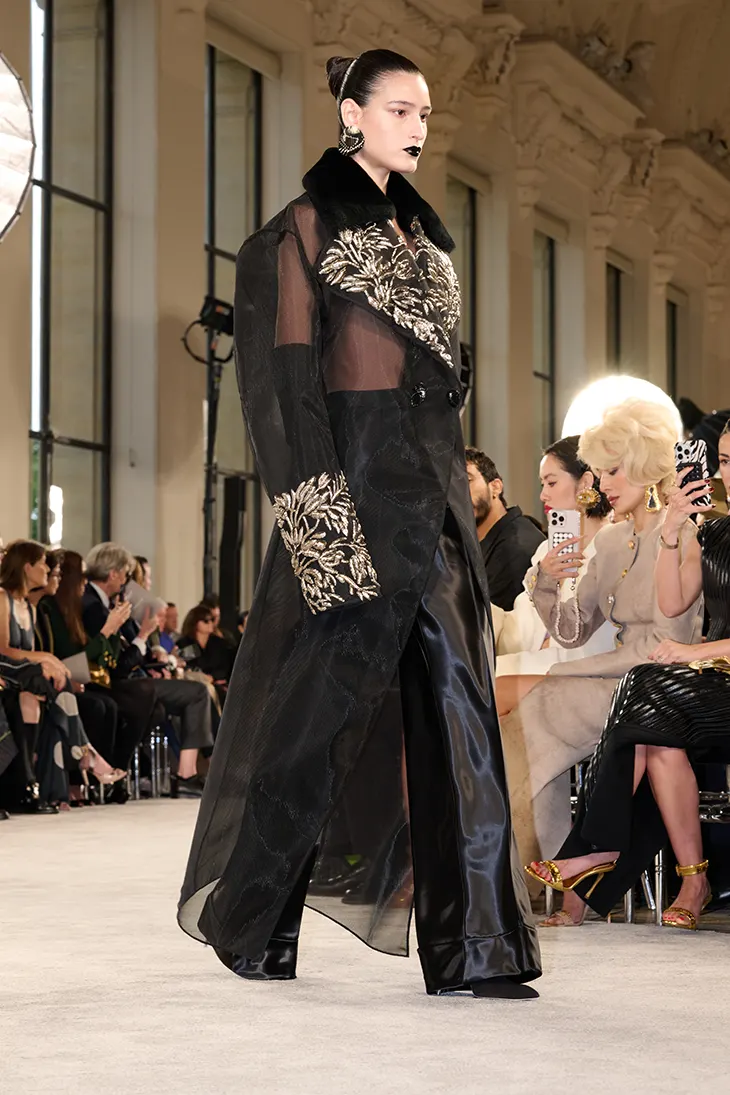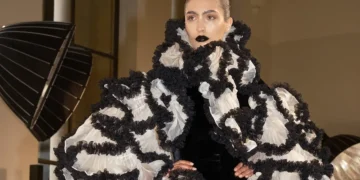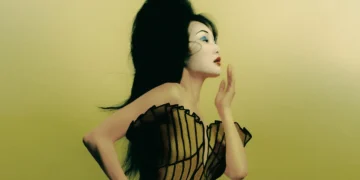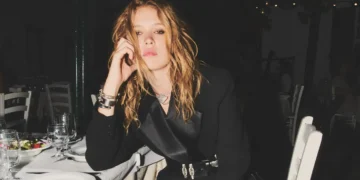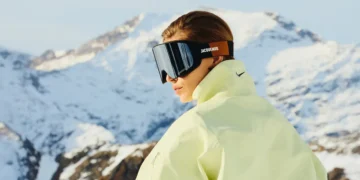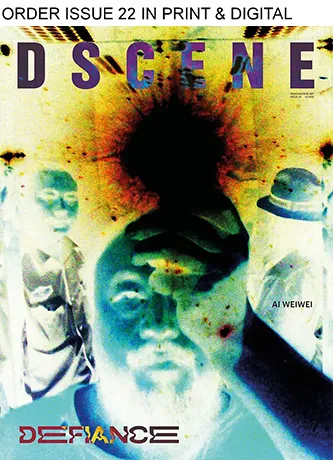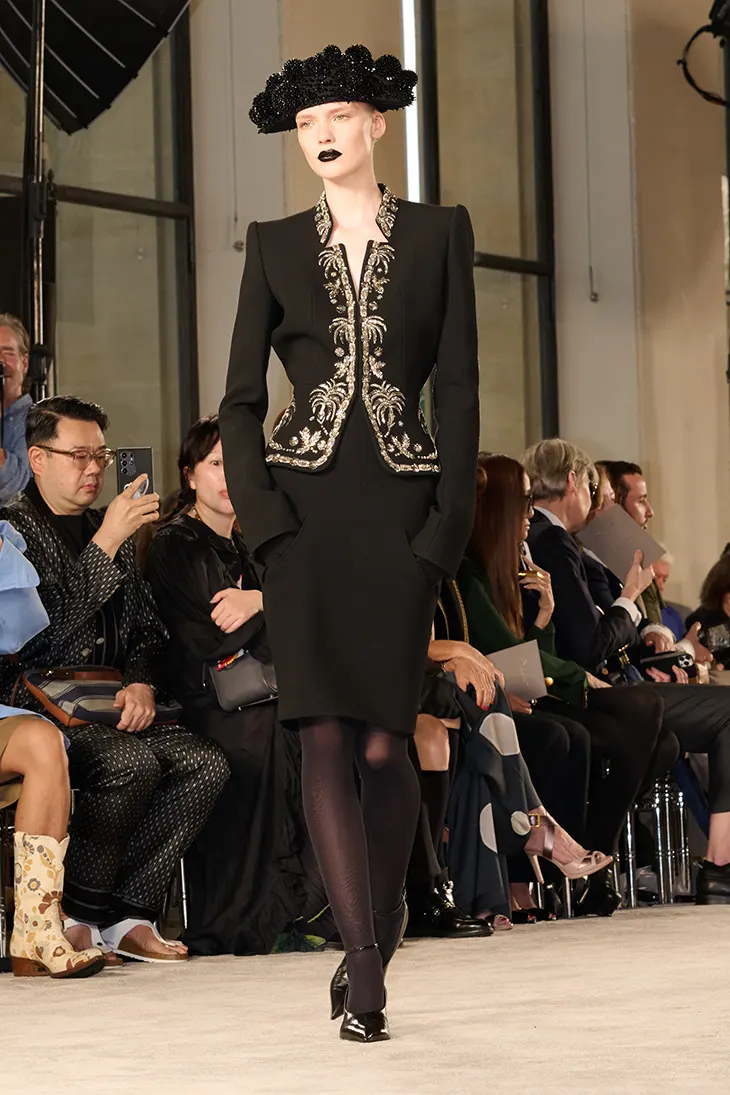
With Back to the Future, Daniel Roseberry delivers his most conceptually rigorous collection for Schiaparelli to date, one that doesn’t merely nod to history but wrestles with it. Set entirely in black and white, the Fall Winter 2025–26 Haute Couture collection departs from color to explore the idea of time as both collapse and reinvention. The results are haunting, sculptural, and intellectually charged, positioning fashion not as a trend machine but as a place of memory, tension, and possibility.
COUTURE COLLECTIONS
This season, Roseberry discards the expected cues of futurism, metallics, tech, digital motifs, vin favor of a refined, historical lens. Gone are corseted silhouettes; instead, structure comes through sharp tailoring, architectural drape, and trompe l’oeil effects. The designer focuses on silhouettes that define the waist and hips without relying on the rigidity of shapewear, proposing a new language of eveningwear rooted in movement and contradiction.
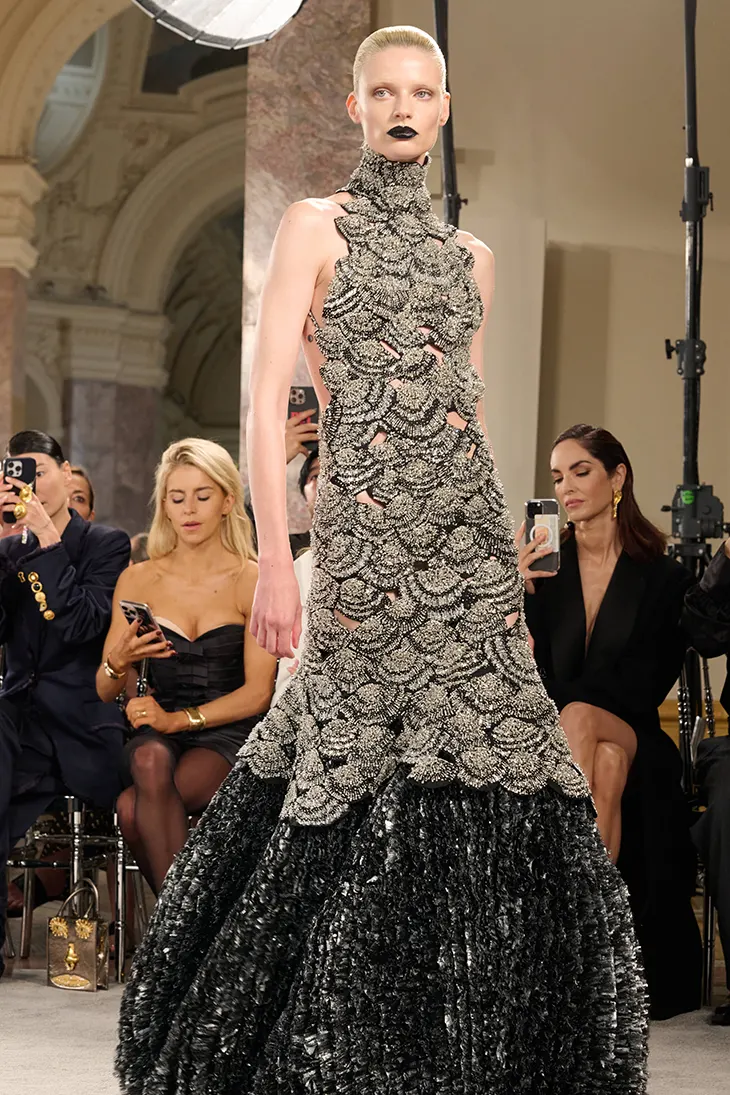
House codes are revisited not with loud declarations, but through concealed gestures: a keyhole carved into the lining of a jacket, anatomical motifs rendered in ceramic embellishments, measuring tapes embroidered as silk foulards. Elsa’s surrealism is not treated as costume, but as a quiet undercurrent, present in the choice of materials like Donegal wool and high-shine satines, in the deceptive simplicity of forms, and in the intricate layering of texture and technique.
Among the standout pieces is a reimagining of Schiaparelli’s legendary “Apollo” cape, now transformed into a structure of diamanté starbursts rendered in deep black and satin silver. There’s also the “Eyes Wide Open” gown, where hand-painted irises are encased in resin cabochons and draped with metallic lashes. These fantasy pieces echo Elsa’s past without becoming replicas; instead, they point to a new kind of couture, one that values imagination over spectacle.
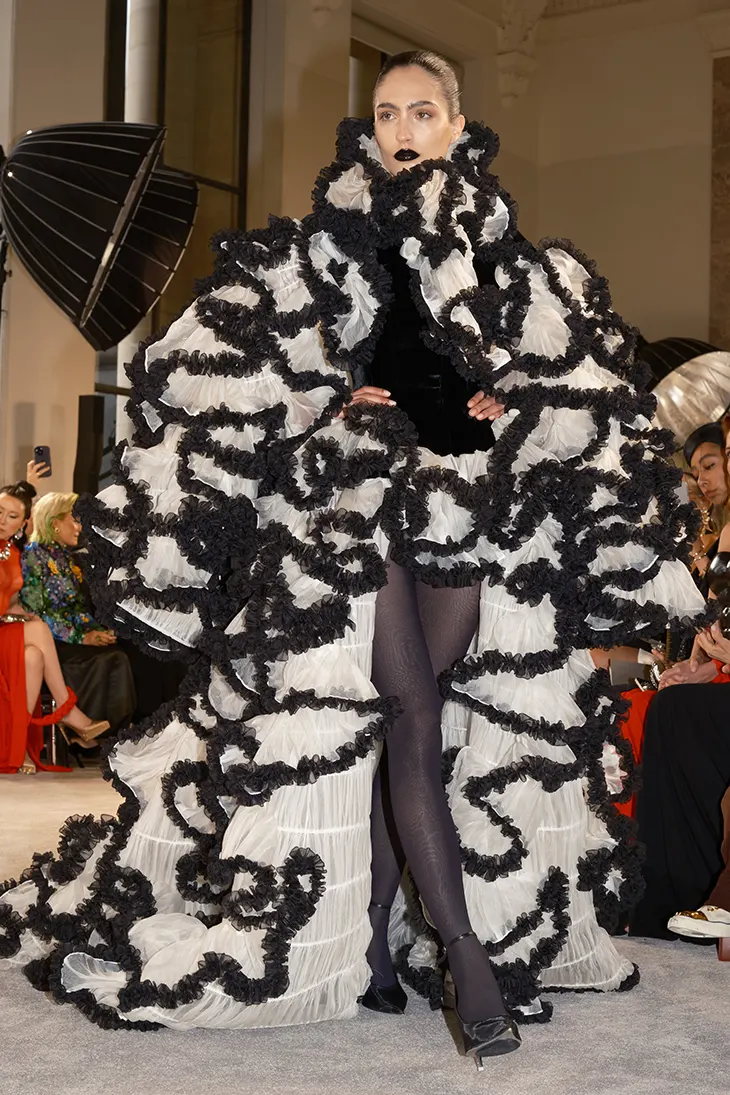
Roseberry proposes the Elsa jacket as a recurring shape, a sharp-shouldered piece offered in wool and crisp cuts that threads past, present, and potential. Meanwhile, matador-inspired coats, pearl-encrusted tailoring, and bias-cut gowns reflect a tension between old-world craft and a future stripped of tech aesthetics, where touch, weight, and form are once again primary.
What makes this collection resonate is not its historical references, but its refusal to treat the past as fixed. Roseberry’s silhouettes feel like relics from a future that might never arrive, objects left behind in a time where screens have gone dark and couture reclaims its slowness, its detail, its purpose.
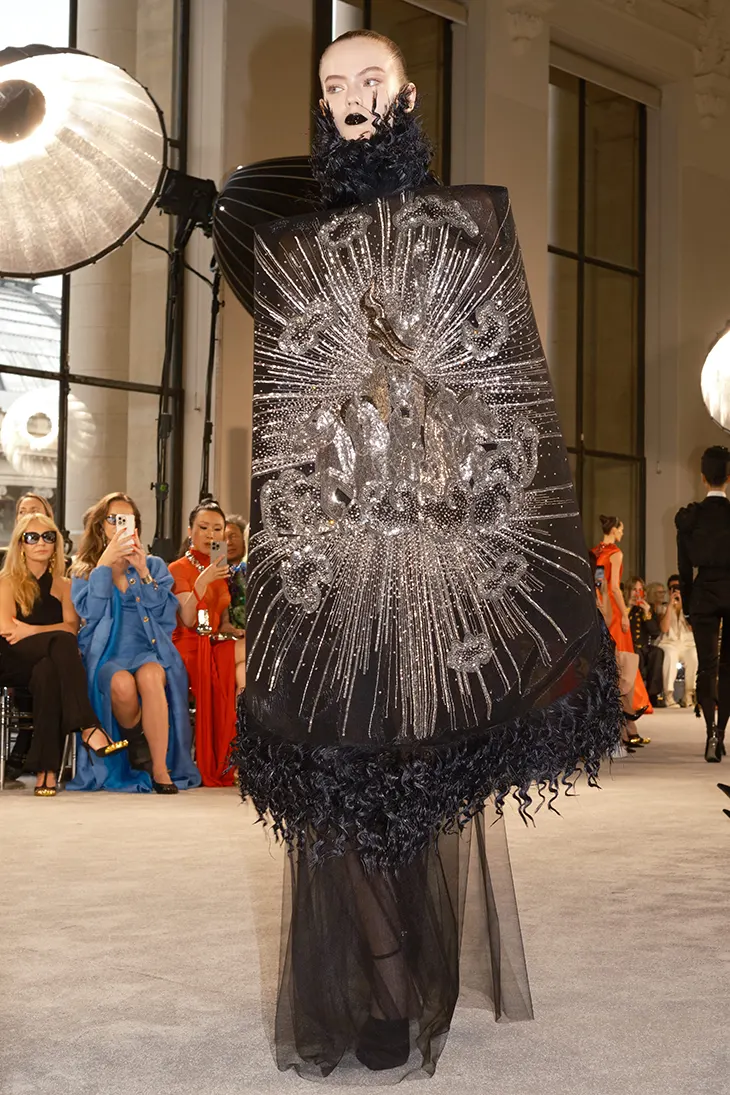
In Back to the Future, nostalgia is a starting point, not a destination. Roseberry questions whether the most radical gesture today might be a return, not to repetition, but to fashion as art, inquiry, and resistance. As he puts it: “It’s too easy to romanticize the past. It’s too easy to fear the present.” This collection does neither. It sits in the uncomfortable space between, and in doing so, gives us something truly new.
